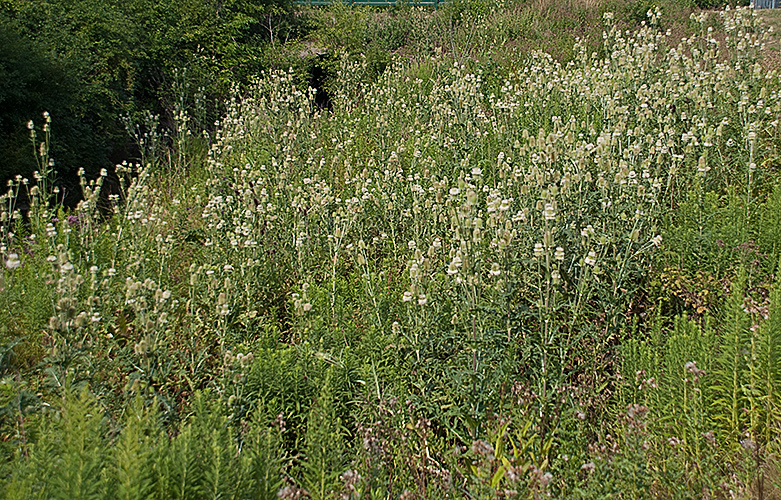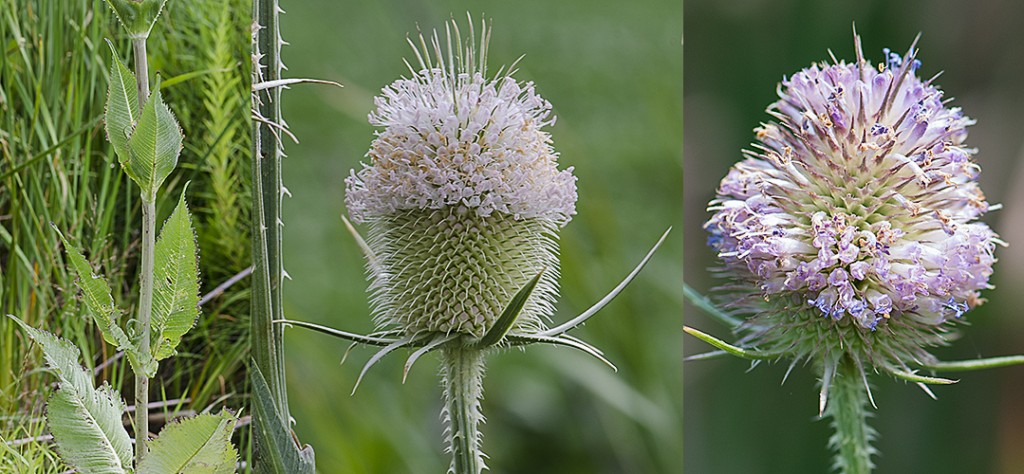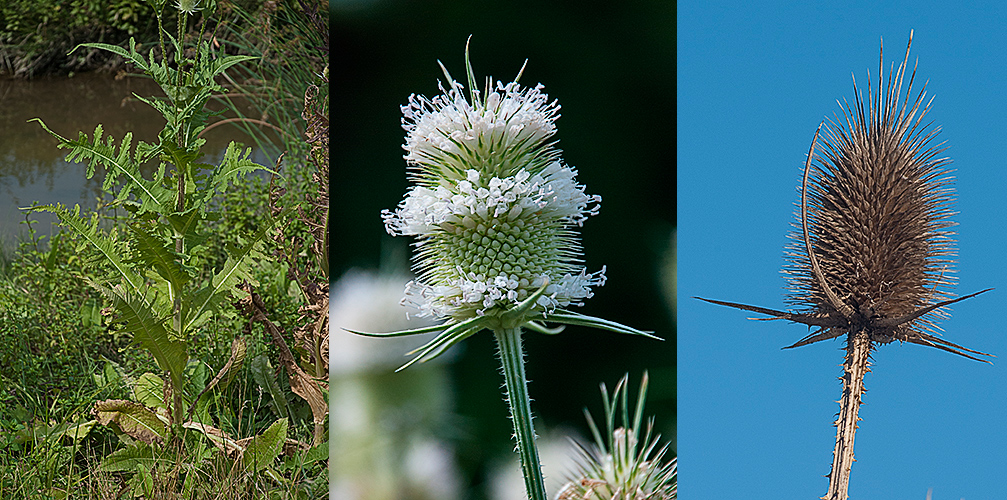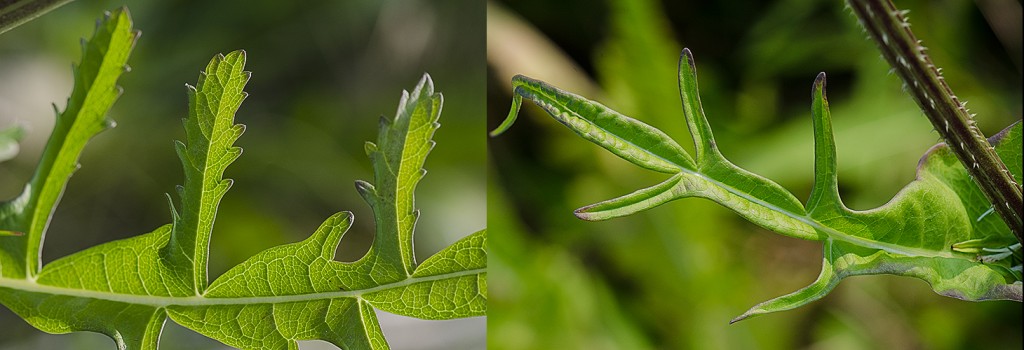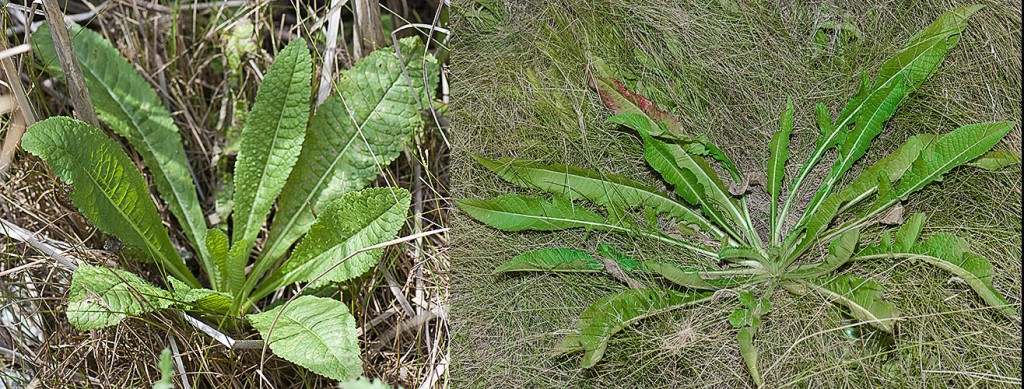Michigan has two naturalized species of Teasel: Wild Teasel (Dipsacus fullonum), and Cut-leaf Teasel (Dipsacus laciniatus). Both were originally from Europe but now are found commonly in southern Michigan but rarely in the north. Being tall plants, often 2m [7 feet] high, they are easy to spot along highways. Dried “winter bouquets” sometimes use the attractive heads either naturally or spray-painted. They bloom starting in the center of the head and moving outward toward the top and bottom. Both species are biennials, developing a basal rosette of leaves the first year and flowering in the second.
Wild Teasel has stem leaves that have entire (smooth) margins but sometimes they have prickly margins or even coarse teeth. The flowers are normally lilac colored but can be white or cream-colored. This species was first collected in Michigan in 1844.
Cut-leaf Teasel is not listed in many wildflower books. Its stem leaves are pinnatifed (with deep lobes) or bipinnatfid (with the lobes, lobed again). Their leaf bases join and sometimes will hold water. The genus name Dipsacus is said to be derived from the Greek word dipsa meaning to thirst, based on this characteristic. This species is taller on average than the Wild Teasel and often forms large colonies. Normally the flowers are a dirty white. The earliest records are from 1894.
Both species are in flower now and easy to find in southern Michigan. Take a close look at teasel and learn to separate the two species. These are impressive plants.
Note: The nomenclature of Teasel is confusing. Dipsacus fullonum was called D. sylvestris and is so-named in older wildflower books. D. fullonum was applied to a European species,now called D. sativus, that has not yet been found in Michigan.
Copyright 2014 by Donald Drife
Webpage Michigan Nature Guy
Follow MichiganNatureGuy on Facebook

